IS領域文獻探討寫作指南 / A Systems Approach to Conduct an Effective Literature Review in Support of Information Systems Research
IS領域文獻探討寫作指南 / A Systems Approach to Conduct an Effective Literature Review in Support of Information Systems Research
這是圖書資訊學研究趨勢的課堂報告。這篇是文獻探討的寫作指南,包括如何找尋文獻、如何撰寫文獻探討。很像是研究方法會講的內容。實際上這篇跟圖書資訊學並沒有這麼密切的關係。
This is a course report of 圖書資訊學研究趨勢. This paper describes how to conduct an effective literature review by searching literature and composing review. This paper is a very useful material for Research Methodology course.
文獻來源 / Bibliography
Levy, Y., & Ellis, T. J. (2006). A systems approach to conduct an effective literature review in support of information systems research. Informing Science: International Journal of an Emerging Transdiscipline, 9(1), 181–212. Retrieved from http://www.scs.ryerson.ca/aferworn/courses/CP8101/CLASSES/ConductingLiteratureReview.pdf
關鍵字 / Keywords
- literature review 文獻探討:一般被擺在IMRAD (Introduction, Methods, Results, And Discussion)的I
- effective literature review / literature search 有效率的整理文獻與檢索
- literature categorization / literature classification 文獻分類
- literature analysis / literature synthesis 文獻分析與統整
- Argumentation Theory 論證理論
摘要 / Abstract
- 這篇文章介紹了如何有效地處理與撰寫的文獻探討。
- 這篇文章是寫給Information Systems (IS)資訊系統領域的博士生、IS領域的入門研究者、以及其他不知道如何基於文獻撰寫合適研究論文的IS研究者。
- 本文所提出的系統性撰寫文獻探討的方法包括三個階段:
1. input 蒐集文獻
2. processing 整理文獻,可以參考教育學家Bloom (布魯姆)的分類法
3. output 撰寫文獻探討,使其支持研究本身 - 這篇文章不僅是介紹了撰寫紮實文獻探討的詳細指導,也總結了良好的文獻探討對於IS研究的價值。
筆記下載 / Note Download
下載:Google Drive、OneDrive、Box、MEGA
筆記內容 / Note
1. Introduction
1-1. 為何探討? / Why Conduct a Literature Review? [P.183 / PDF.3]
- 繼往開來:Helping the researcher understand the existing body of knowledge including
- where excess research exists (i.e. what is already know?) and
- where new research is needed (i.e. what is needed to be known?)
- 建立理論基礎:Providing a solid theoretical foundation for the proposed study (related to "what is already known?")
- 確立問題所在:Substantiating the presence of the research problem (related to "what is needed to be known?")
- 凸顯貢獻:Justifying the proposed study as one that contributes something new to the BoK
- 架構研究內容:Framing the valid research methodologies, approach, goals, and research questions for the proposed study
1-2. Stages of the literature reivew process [P.182 / PDF.2]
2. Literature Review: Outputs
2-1. Writing Arguments and Argumentation Theory [P.201 / PDF.21]
[WARRANT] 當系所中最重要的教授去教一年級學生時,這可說是該系所將教學視為最重要的任務。
[CLAIM] 我們已經試著改變大學生的教育被視為次要的問題,
[REASON] 而這問題可透過要求我們最好的研究者去教大一新生來解決。
[EVIDENCE] 舉例來說,諾貝爾物理獎Kinahan教授現在就在教大一新生物理。
- CLIAM 宣告:A claim is “an arguable statement” -> proposes a “solution to the problem”
- 事實:claims of fact,
- 價值:claims of value,
- 概念:claims of concept and
- 解釋:claims of interpretation
- REASON 理由:The problem is addressed by a claim put forth by the study, combined by the support or a reason to such claim.
- EVIDENCE 證據:evidence as information and/or “data used to support the claim”
- WARRANT 承諾:warrant (or permit) as “an expectation that provides the link between the evidence and the claim”
2-2. 有效的文獻探討應包含 [P. 205 / PDF. 25]
- 文獻中的論點:the major points contained in an article,
- 解釋論點:interpret those points,
- 分類文獻:classify the article's position in the BoK (Body of Knowledge),
- 解釋文獻的重要性:explain the importance of the article,
- 比較不同文獻的發現與異同之處:compare and contrast the findings and position of the article with other articles from the BoK, and
- 按照你研究內容評估文獻的發現:evaluate the findings of the article in light of the rest of the BoK.
3. Literature Review: Inputs
3-1. 評估文獻品質 / Validating the quality of IS literature
3-1-1. Journals [P.185 / PDF.5]
- 要有同儕評閱、確保理論背景紮實:Quality IS research literature from leading, peer-reviewed journals should serve as the major base of literature review as it provides sufficient theoretical background as well as leads for additional references on the specific subject matter.
- 少用雜誌、新聞等較少理論背景的文獻來源:Although not totally unacceptable, use of such sources (i.e. professional magazines, newspapers, etc.) should be restricted to factual information due to the low theoretical background and application dependency.
- MIS期刊排行:IS World’s top ranked MIS journals and electronic availability:
1. MIS Quarterly
2. Information Systems Research
3. Communications of the ACM
4. Management Science
5. Journal of MIS
3-1-2. Conferences [P.187 / PDF.7]
- 應優先選擇重要學會舉辦、具有同儕評閱的研討會,而非廠商舉辦的研討會
Proceedings from these for-profit conferences may not have been subjected to the same peer-review process as those from conferences run by reputable research/professional associations (i.e. AIS, ACM, INFORM, IEEE, AOM, ISI, DSI, etc.). - IS領域中,學會舉辦的研討會數量增加中
Hardgrave and Walstrom's study (1997) was done about a decade ago and over that time new IS-related conferences sponsored by reputable associations have immerged. - IS領域的重要研討會排序:Ranked IS conferences with electronic availability of proceedings by Hardgrave and Walstorm (1997)'s study:
1. International Conference on Information Systems (ICIS)
2. Hawaii International Conference on System Sciences (HICSS)
3. International Federation for Information Processing (IFIP)
4. International Conference on Decision Support Systems (DSS)
5. Decision Sciences Institute (DSI) - National Conference
6. Society of Information Management (SIM) Conference
7. International Association for Computer Information Systems (IACIS) Conference (Proceedings published in Issues in Information Systems)
8. Institute for Operations Research and the Management Sciences (INFORMS) Conference
9. Information Resources Management Association (IRMA) Conference
10. Academy of Management (AOM) Conference
11. Decision Sciences Institute (DSI) - Regional Conferences - 作者補充的其他研討會:Non-ranked IS conferences with electronic availability of proceedings:
1. International Academy of Information Management (IAIM) Conference
2. American Conference on Information Systems (AMCIS)
3. Information Systems Education Conference (ISECON)
4. Institute of Electrical and Electronics Engineers (IEEE) National Conferences
5. Informing Science + Information Technology Education (InSITE) Conference
3-2. 文獻是否合用 / Testing for applicability to your study
3-2-1. 文獻的合適度 / Applicability of literature [P.188 / PDF.8]
- Q: 文獻探討應含括諸子百家嗎? Should all studies and articles dealing with that theory, model, and/or construct be included in my review?
- A: 不,應只探討相關的文獻。
No. Only the applicable literature articles that are relevant to build the theoretical foundations for the validity of the theories, constructs, and measures should be noted.
3-2-2. 文獻使用倫理 / Ethical and unethical use of references [P.188 / PDF.8]
- IS researchers must ensure that references (1) used in a proper context and (2) with high degree of confidence.
- 合理使用、標明引用
- 確定引用內容無誤
3-3. 如何搜尋文獻 / How to Find Quality IS Literature?
3-3-1. 關鍵字搜尋 Keywords search [P.190 / PDF.10]
- 不知道關鍵字?請從分類表開始找起
The novice researcher a workable starting point- The Association for Computing Machinery (ACM) classification system (http://www.acm.org/class/1998/homepage.html) and
- MIS Quarterly Roadmap (http://www.misq.org/roadmap/code/level2/h.html)
3-3-2. 反向搜尋 Backward search [P.190 / PDF.10]
- 參考文獻滾雪球 / Backward references search refers to reviewing the references of the articles yielded from the keyword search noted above.
- 找尋該作者之前發表的文獻 / Backward authors search refers to reviewing what the authors have published prior to the article.
- 取得更多關鍵字 / Previously used keywords refers to reviewing the keywords noted in the articles yielded from the keyword search noted above.
3-3-3. 前向搜尋 Forward search [P.191 / PDF.11]
- 找尋引用該文獻的文獻 / Forward references search refers to reviewing additional articles that have cited the article.
- 找尋該作者之後發表的文獻 / Forward authors search refers to reviewing what the authors have published following the article.
3-4. 文獻何時算找完? / How to Tell When You Are Done With the Literature Search? [P.192 / PDF.12]
- Q: 「蒐集相關文獻的動作要到什麼時候才完成?」
"At what point should the process of gathering additional relevant literature end?" - A: 「找到你看到的文章都是相似的為止」
If one "will get the feeling that ‘I've seen this (or something similar to it) before,'" it may suggest that the literature search is near completion.
4. Literature Review: Processing [P.192 / PDF.12]
[STEP 1/7] 知道文獻的內容 / Know the Literature [P.193 / PDF.13]
- 引用層級 / Pointing at the literature:
Other research also indicates that individual and group marks should be combined in-group activities (Buchy & Quinlan, 2000; Lim et al., 2003; Romano & Nunamaker, 1998).
- 瞭解層級:The knowledge level is commonly demonstrated by activities such as listing (條列), defining (定義), describing (描述), and identifying (辨識):
Buchy and Quinlan (2000) interviewed 36 students participating in tutorial groups.
These interviews indicated that the students felt they were becoming more conscious of learning processes of both themselves and their peers.
[STEP 2/7] 吸收比較文獻 / Comprehend the Literature [P.193 / PDF.13]
- 未理解層級 / Pre-comprehension level mastery
Han and Kamber (2001) suggest an evolution that moves from data collection and database creation, towards data management, and ultimately, data analysis and understanding.
- 理解層級:Comprehension is demonstrated by activities such as summarizing (摘要), differentiating (辨識), interpreting (比較差異), and contrasting (對照).
Han and Kamber (2001) suggest an evolution that moves from data collection and database creation, towards data management, and ultimately, data analysis and understanding.
For example, data processing is a base function enabling manipulation and aggregation of data, thus facilitating searching and retrieval.
[STEP 3/7] 熟悉領域用詞 / Cognitive/construct-level
4-3-1. 理論 / Theory: Definition and Use in IS Literature [P.194 / PDF.14]
- 理論元件 / Theory has three main components:
- 假設:基於指定變項 / The first component of theory includes propositions or hypotheses that are based on clearly defined and interrelated constructs (or concepts).
- 現象:變項的關聯 / The second component of theory includes a representation of a systematic view of phenomena by a notation of specific relationships among a set of constructs (or variables).
- 解釋、預測 / The third component of theory includes an explanation of phenomena, mainly in order to help make predictions.
- 質性研究與量化研究使用理論的差異
Theory is used differently in qualitative than in quantitative research- 量化研究:為了推論、檢定特定情境中的現象
Quantitative research tends to use theory for (1) deductive purposes or (2) testing generalized perspective, or theory, of a specific phenomenon in a specific context. - 質性研究 :歸納、發展理論
Qualitative research, on the other hand, tends to use theory for (1) inductive purposes or (2) developing a theory based on specific observed phenomenon
- 量化研究:為了推論、檢定特定情境中的現象
- 理論的樣貌 / Researchers tend to represent theory in several forms.
- 假設與解釋:The first form of theory representation deals with a set of propositions or hypotheses and explanations of their interrelationships.
- 變項與關聯:A second form of theory representation, noted by Creswell (2003), deals with a set of causal relationships between constructs and variables.
- 概念流程圖:The third representation of theory is by visual models or conceptual maps.
4-3-2. 概念/變項 / Constructs/variables: Definition and Use in IS Literature [P.196 / PDF.16]
- 概念:一種呈現抽象形式的概念,加上詳細的定義
Construct: "a concept expresses an abstraction formed by generalization from particulars", whereas a construct is a concept with added meaning "deliberately and consciously invented or adopted for a special scientific purpose" - 變項:可觀察的事物或資料
Variable: "a variable is a property that takes on different values" (p. 40) or appears to be observable "when operationally defined" - 潛在變項:不可觀察的變項
Latent variable: in order to represent a construct, researchers proposed a special expression to indicate such unique type of unobserved variable by using the term "latent variable".
4-3-3. 模型 / Models/frameworks: Definition and Use in IS Literature [P.198 / PDF.18]
- 一種普遍化的理論,敘述了概念與變項之間的關係
A model or theoretical framework is a generalized type of theory that indicates relationships between constructs or latent variables.
[STEP 4/7] 應用文獻 / Apply the Literature [P.199 / PDF.19]
- 找出跟你的研究相關的概念 / identifying the major concepts germane to the study and
- 適當地引用 / placing the citation in the correct category
[STEP 5/7] 分析文獻 / Analyze the Literature [P.199 / PDF.19]
- Analysis is demonstrated by activities such as separating (分離), connecting (連接), comparing (比較), selecting (篩選), and explaining (詮釋).
Data mining is the analyzing and interpretation of large amounts of information.
Through analyzing vast amounts of data it is possible to find patterns, relationships and from these discoveries it is possible to make correlations (Chen & Liu, 2005).
[STEP 6/7] 綜合論述 / Synthesize the Literature [P.200 / PDF.20]
- Synthesis entails activities such as combining (合併), integrating (整合), modifying (修改), rearranging (重組), designing (規劃), composing (撰寫), and generalizing (總結).
One current DRM initiative, the Digital Object Identifier (DOI), is an Internet-based system for global identification and reuse of digital content, and provides a tracking mechanism to identify digital assets (Paskin, 2003; Dalziel, 2004).
However, despite being integrated in learning object technologies, this DOI is not widely employed across LOR and databases, nor is it universally adapted by content owners (Nair & Jeevan, 2004).
Similarly, while most metadata schema enables assets to be tagged with copyright information, this method lacks technological enforcement (Genoni, 2004).
[STEP 7/7] 分類評估 / Evaluate the Literature [P.200 / PDF.20]
- 分類評估層級:Evaluation connotes activities such as assessing (深入), deciding (判斷), recommending (建議), selecting (選擇), judging (決斷好壞), explaining (詮釋), discriminating (區別), supporting (論點支持), and concluding (總結).
… the applications of data mining fall under the general umbrella of business intelligence.
Case studies have reported implementation of data mining applications for:
(1) Enrollment management (to help capture promising students) (Sanjeev, 2002);
(2) Alumni management (to foster donations and pledges) (Ma et al., 2000);
(3) Marketing analysis (to better allocate the marketing funds) (Glance et al., 2005); and
(4) Mail campaign analysis (to judge its effectiveness and design new, better targeted mailings) (Abe et al., 2004).
Based upon the similarity to applications within the business community, Liu et al (2005) speculated that data mining could also be used within the educational community for fraud analysis and detection.
5. Discussion
5-1. 寫作常見問題 / Writing problems and solutions [P.204 / PDF.24]
| Problem | Possible cause(s) | Solution(s) |
| Lack of time. | Especially for part-time students, life makes many demands. | Time management. Make writing a part of your personal leisure time. Socialize family and friends to recognize that your academic writing work is important. |
| Unfamiliar with different styles, especially academic writing. | Familiar only with style used in the workplace. Lack of academic writing background. | Read different styles. Work at understanding different conventions for different situations. |
| Not used to writing at length | Used to face-to-face communication. Rarely use writing for argument and persuasion, hence not familiar with tenses, the possessive and grammatical conventions. | Reading and learning! Writing short piece first. Subdivide academic writing (such as dissertation drafts) into manageable sections. |
5-2. 閱讀文獻的重點 / Reading the literature [P.205 / PDF.25]
- 保留標註的文獻:Keep an annotated copy of all the articles, book chapters, or conference proceedings you read in both hardcopy and electronic format.
- 標亮任何跟你研究相關的文獻:Highlight everything in the article that is applicable to your research.
- 撰寫筆記:Write notes to yourself about the article.
- 撰寫一兩段書摘:Write a brief (one to two paragraph(s)) annotated bibliography entry.
- 圈起關鍵字:Look for and circle any terms or expressions that might serve as keywords.
- 標註可用的理論、模型等:Annotate the applicable model(s), etc. on the front of the article.
其他討論
- 你如何管理文獻?
- 你如何安排論文章節的寫作順序? IMRAD -> 緒論 / 文獻探討 / 研究方法 / 研究結果 / 結論
IS領域中常用的變項 / Main Constructs Used in IS Research
以下總共199個變項。隨便挑選5個來組成依變項,搞不好就可以輕鬆作研究也說不定?不過能夠搞懂這199個變項的話,一定可以成為資訊科學領域的大師吧!
以下你知道那些變項呢?歡迎在留言中一起來討論!
Figure 10: Main constructs used in IS research, adopted from ISWorld
- Acceptance of Quantitative System
- Adequacy of Training
- Affect of Using Personal Computers
- Application Systems Skills
- Attending to Interpersonal Relations
- Attending to Production And Targeting Work Behavior
- Attitude Toward Alternative Media
- Attitude Toward Usage:使用態度
- Behavioral Intention for Usage
- Behavioral Problems
- Budget in Is Devoted to Training
- Capabilities of The Planning System
- Career Orientation:職業導向
- Career Satisfaction:職業滿意度
- Chargeback Information Use
- Commitment to Ic Concept
- Communication in Meetings
- Compatibility
- Compatibility of An Innovation With Experience
- Competitive Strategy
- Complexity of Personal Computers
- Computer Abuse
- Computer Self-Efficacy:電腦自我效能,懂得如何靠自己使用電腦的能力
- Computer User Satisfaction:電腦使用滿意度
- Conflict As It Affects Systems Development
- Conflict Resolution And Outcomes in Systems Development
- Coordination of End-User Computing
- Cost Variability
- Credibility of Computer System
- Decentralization:去中心的程度
- Decision Making Satisfaction
- Demonstrability of Results With Innovation
- Design Considerations for System
- Designer Perceptions of User Shortcomings
- Desired Involvement in Computing Activity
- Deterrent (To Computer Abuse) Certainty
- Deterrent (To Computer Abuse) Severity
- Development of New Systems:新系統開發程度
- Discrepancies Between Needs And Features
- Discussion Quality in A Meeting
- Duration of Cbis
- Ease of Use:易用性,來自科技接受度模型。
- Ease of Use of Innovation:創新易用性
- Ease of Use of Software Package
- Economic Value Dimensions for Isd
- Efficacy
- Efficiency of Meeting Processes
- Employees Devoted to Computer-Related Training
- End-User Computer Literacy:使用者電腦素養
- End-User Computing Satisfaction
- End-User Involvement:使用者參與程度
- End-User Satisfaction With Computing Activity
- Engagement
- Enjoyment in Using A Software Package
- Enriching The Job
- Environmental Factors of Security
- Equity Perception in The Allocation of Is Resources
- Executive Involvement in Management of IT
- Executive Participation in Management of IT
- Expectations About System:系統期望程度
- Experience With The System:系統使用經驗
- Extent of Boundary-Spanning Activities
- Extent of Fulfillment of Key Planning Objectives
- Facilitating Conditions -Resources
- Facilitating Conditions -Technology
- Facilitating Conditions of The Use of A Personal Computer
- Facilitating End-User Computing
- Factors Contributing to Job Satisfaction:職業滿意度的變因
- Flow:心流,指個人將注意力完全投注在某種活動上的感覺。
- Global User Satisfaction:整體使用者滿意度
- Health Related Behavior
- Image of Innovation Adopter
- Impact of Technology:科技影響力
- Implementation Failure
- Importance of Attributes of Is for Success
- Importance of Job Roles:職業角色重要性
- Importance of Skills:技能重要性
- Influence in Systems Development
- Information Center Support:資訊中心支援程度
- Intention to Leave Current Organization
- Interpersonal Communication About An Innovation
- IT Structure:資訊架構
- Job Complexity:職業複雜度
- Job Fit of Personal Computers
- Job Satisfaction:職業滿意度
- Job-Determined Importance (Need) for An Innovation
- Level of System Utilization:系統使用層級
- Long Term Consequences of Using A Personal Computer
- Management Quality Interactions
- Measuring IS's Effectiveness
- Microcomputer Playfulness
- Motivational Factors
- Nature of Work
- Nonsalary Incentives
- office Size Interactions
- office Type Interactions
- Organization Characteristics:組織特性
- Organizational Commitment
- Package Characteristics
- Participation in Design of Computer-Based Is Reports
- Participation in Systems Development
- Peer Influences:同儕影響
- Perceived Behavioral Control Over Usage
- Perceived Cohesion in Groups
- Perceived Decision Making Purposes
- Perceived Disorientation
- Perceived Ease of Use:知覺易用性,知道這個工具是否好用,來自科技接受度模型。
- Perceived Future Needs for Information Systems
- Perceived Importance of Computer-Related Abilities
- Perceived Involvement in Computing Activity
- Perceived Job Characteristics
- Perceived Management Support for An Innovation
- Perceived Medium Richness
- Perceived Proficiency in General Is Knowledge
- Perceived Proficiency in Is Product Knowledge
- Perceived Proficiency in Knowledge About The Organizational Un
- Perceived Proficiency in Organizational Knowledge
- Perceived Proficiency in Organizational Skills
- Perceived Proficiency in Technical Skills
- Perceived Usefulness:知覺有用性
- Perceived Usefulness of A DSS
- Perceived Usefulness of General Is Knowledge
- Perceived Usefulness of Is Product Knowledge
- Perceived Usefulness of Knowledge About The Organizational U
- Perceived Usefulness of MIS
- Perceived Usefulness of Organizational Knowledge
- Perceived Usefulness of Organizational Skills
- Perceived Usefulness of Technical Skills
- Perceptions of Qualitative System
- Perceptions of Quality of Training
- Performance Impact of Computer Systems
- Personal Innovativeness Towards An Innovation
- Physical Accessibility of An Innovation:創新科技的物理可用性
- Planning System Success:系統成功的計劃程度
- Preferred Form of Organizational Structure
- Pressure to Use The System
- Preventive Measures
- Processing Needs
- Productivity:生產力
- Progressive Use of It in The Firm
- Quality of Billing Information
- Quality of Ic Support Services
- Quality of Working Life
- Relationships Between Job Characteristics And Data Required
- Relative Advantage of An Innovation
- Reliance On Evaluation System Measures
- Rival Explanations (For Computer Abuse)
- Role Ambiguity:角色混亂
- Role Clarity
- Role Conflict:角色衝突
- Role Stressors
- Skill in Software:軟體技能
- Skill On A Task for Which An Innovation Could Be Used
- Social Factors Affecting Use of Personal Computers
- Socio-Political Value Dimensions for Isd
- Software Efficacy Beliefs
- Source of Computer-Related Training
- Stage of Growth:成長階段
- Stages of Ic Evolution:IC變革階段
- Status Effects Experienced in Meetings
- Strategic Orientation of Business:商業策略導向
- Strength of Management Message About An Innovation
- Stress:壓力
- Stressors
- Subjective Importance of A Task for Which An Innovation Could Be Used
- Subjective Norm of Usage
- Success of Implementation:施行的成功程度
- Superior Influences
- System Usage Related to Software Package
- Systems Analysis Availability
- Task Characteristics:任務特質
- Task Equivocality
- Task Interdependence
- Task-Technology Fit (Including Sub-Factors)
- Team Work in A Meeting
- Technical Value Dimensions for Isd
- The Effects of A Technological Environment
- Time of Implementation Interactions
- Trialability of Other Innovations
- Turnover Intentions Among Employees
- Type of Application:應用類型
- Use And Satisfaction With The System:系統使用與滿意度
- Use of Computer-Based Systems:電腦系統的使用
- Use of Different Training Methods
- Use of Project Teams:專案團隊的使用
- Usefulness:有用性
- Usefulness of Software Package
- User Abilities:使用者能力
- User Accountability
- User Authority
- User Data Requirements:使用者資料的需求性
- User Information Satisfaction:使用者資訊滿意度
- User Involvement:使用者參與程度
- User Satisfaction With Ic
- Value Placed On Production And Services
- Visibility of Innovation
- Voluntariness of Innovation Adoption
- Work Attitudes And Intentions
- Work Environment Effects On Employees










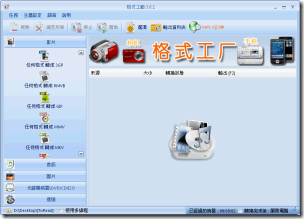
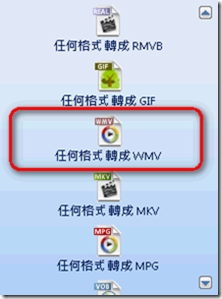
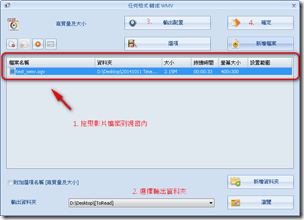


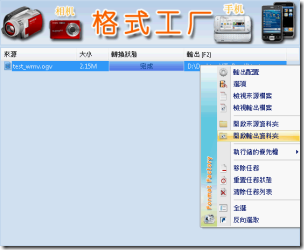
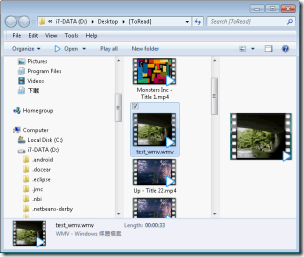




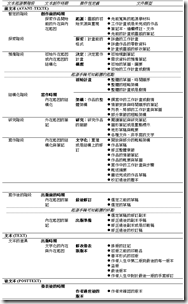








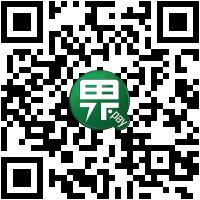
Comments